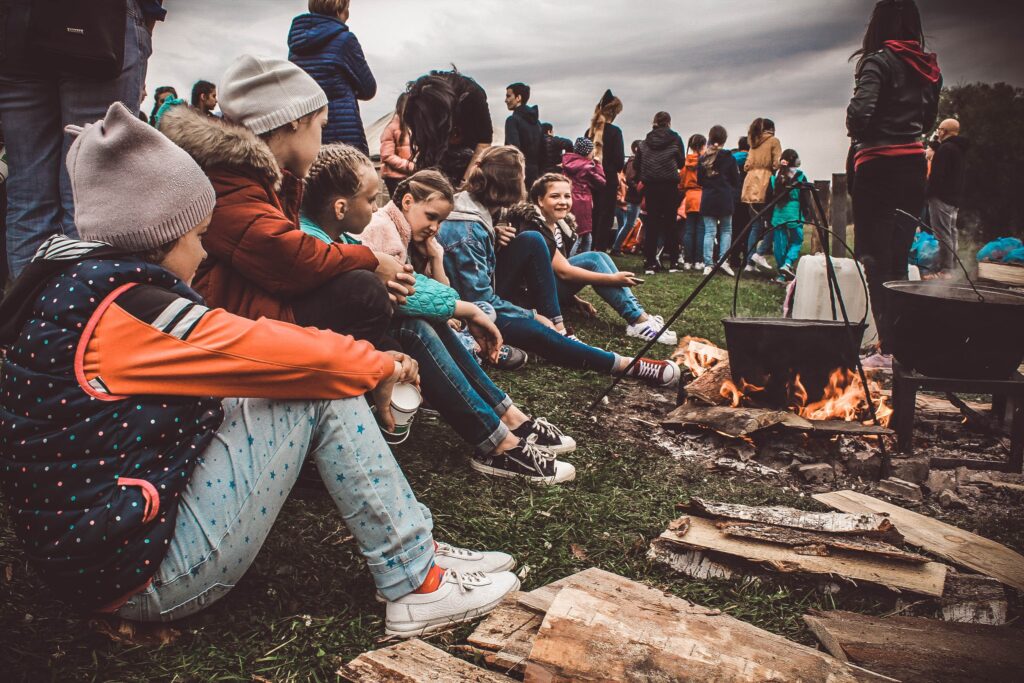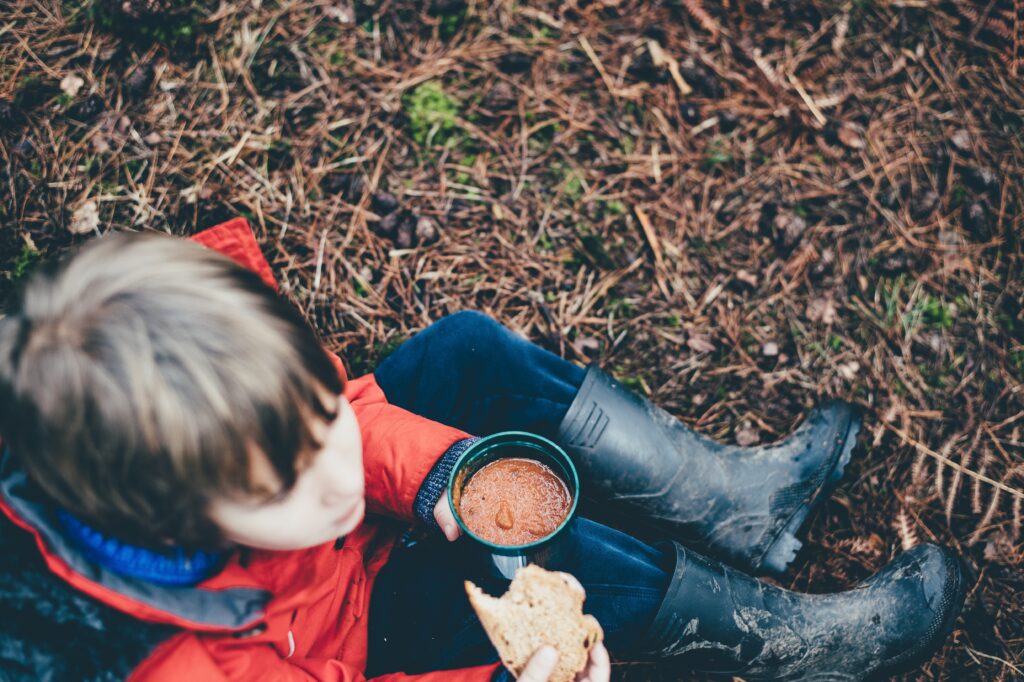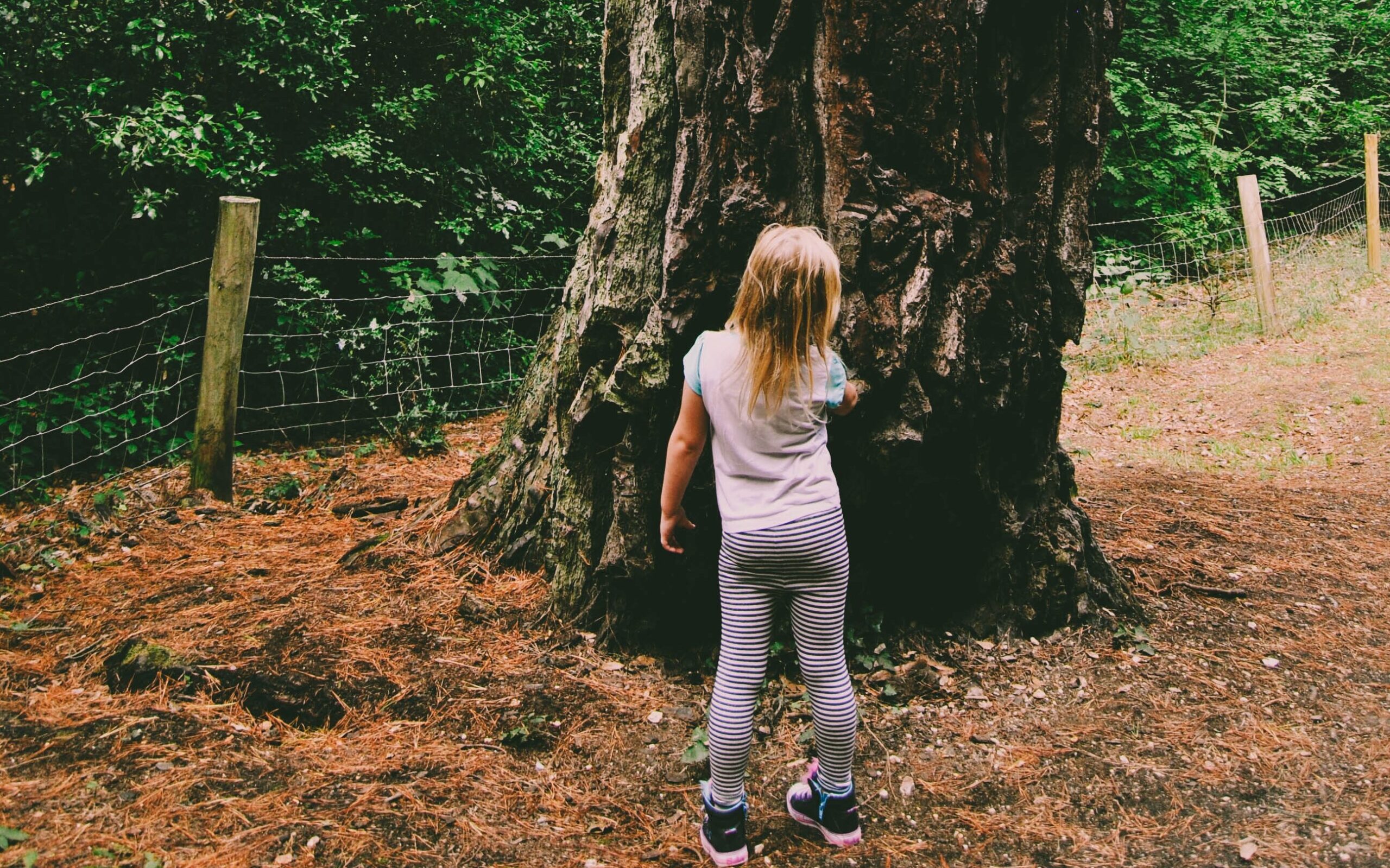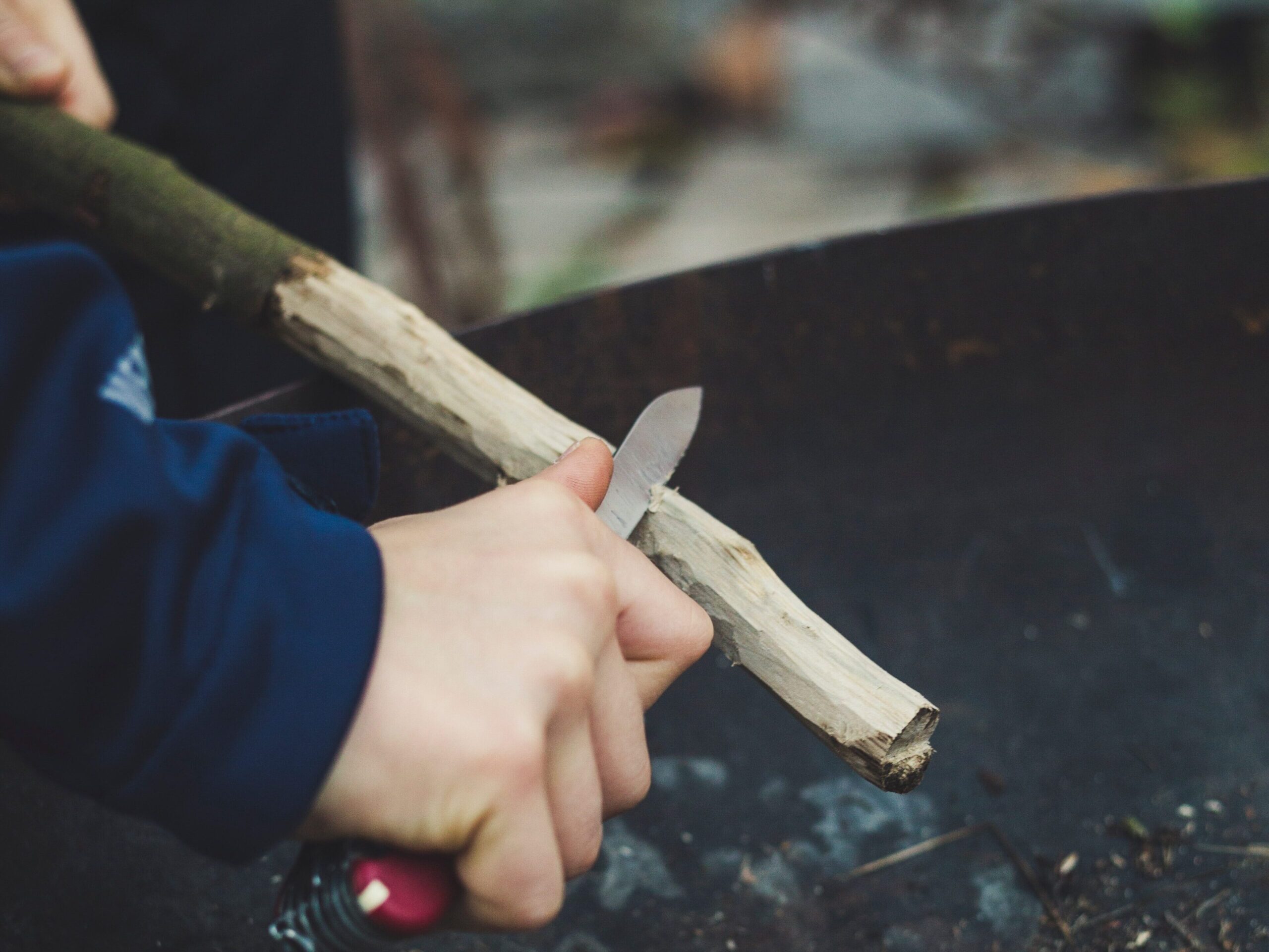Forest school and wild schooling – what’s it all about?
Forest school is an ideology that you can incorporate into your camping trips with kids and will create memories that last forever.
It is the belief that children learn key skills by spending time playing games and practicing survival skills in the forest.
Your kids can dictate what you choose to focus on, so tailor activities depending on how they feel in the moment. You could do teamwork games in the forest and teach them about survival, or discuss the science behind the natural world around you.

What actually is forest school?
The concept was first coined in Denmark in the 1950s and has quickly spread around the world.
Forest schooling is commonly a part of preschool or primary education and is also sometimes used as an extra activity outside mainstream education to help children who struggle in the classroom setting. There are approximately 140 forest schools in the UK that use the woodland as part of their school curriculum.
How to incorporate forest school into your camping trips
Part of the forest school ethos is to include risk-taking as a part of education. This means letting kids do things they may not be able to do in school and day-to-day life, like climbing trees and setting fires. The rationale is that allowing children to take risks such as making fires teaches them how to act responsibly, without being reckless or damaging the environment.

Forest school teaches survival skills
Some of the main things you can teach your kids in the forest are basic survival skills. Making fires is key. Start by teaching them the difference between tinder, kindling and fuel. Then give your kids a flint and steel and help them to make little fires. Also teach them how to set up a safe fire pit, 4 meters from any bushes or structures on bare ground with a circle of stones (or greenwood that you wet down regularly) to contain the fire. If you need a refresher on fire-making basics to teach your kids, then here is a Beginner’s Guide To Camping With Kids.
Now that you have a well-established fire, why not teach the kids how to cook food on it. Let it die down and then wrap potatoes or sweetcorn in tinfoil and place within the embers until cooked through.
Once your children have mastered fire-making you can teach them how to make a proper cooking fire. They should start by making a U shape with rocks and place a large rock at the bottom of the U shape to make act as a chimney. Fill the centre with tinder then crisscross with kindling (long twigs or thin branches). Once they have caught light, add bigger pieces of firewood. Let the fire die down until it becomes embers.
Now you can cook on it. For some recipe advice and more tips for making cooking fires check out Camping Breakfast In Style.

Try your hand at some fishing
You could even try some fishing in rivers you find, or into the sea if you’re near the coast. Bring proper fishing gear and teach your children how to set up the fishing rod, find bait, what kind of bait to use, how to unsnag a line and how to remove a hook from the fish. You can also teach them how to identify different fish. Try fishing with a hook and a line of string for a cheaper alternative, although it’ll be harder to catch a fish, they can still learn a lot of the key skills.
Why not try to collect water to drink when it rains, give kids containers or bags and let them run out into the rain to see who can collect the most rainwater. As you walk through the forest point out wild herbs and edible plants like elderflowers, pineapple weed, blackberries and crab apples. Foraging for free nature food is so yummy.
You could even take some back to your camp and cook with it, or make jams and cordials when you get back home, there are so many possibilities depending on the season.
Navigation skills
Another essential skill to learn is how to use a map and a compass. I would recommend starting kids off with a map before you teach them how to use a compass. You could set your kids challenges where they have to use a map to navigate a walk for the family. Then teach them how to use a compass to find north, and how to navigate with a map and compass once they get a bit older.

Bivouac and Den Building
Why not also make dens with your kids in the forest to teach them teamwork and problem solving skills. Show them how to make lean-to or tipi dens, or let your kids use their imaginations to create a den of their own. It helps to use the natural environment so teach them to look out for y-shaped trunks, which are really useful for making dens. For some more tips have a look at Bivouac and Den Building.

Learning in the forest
You could also incorporate some more academic learning into your trips into the wilderness. What form this takes depends on your kids age, but it can be really helpful to take kids out of the classroom or home setting to learn subjects like maths or science, especially if they struggle with their attention span, or have ADD.
For younger kids, you could use sticks or pinecones to visualise basic arithmetic problems.
Forest school helps teaching the science behind nature
Another great way to teach kids about the world around them is to discuss the science of the natural environment. Children are usually much more engaged with science when its real-world applications are made clear. You could discuss evolution; the way organisms have adaptations that help them survive, then they pass these genes onto their offspring. Then try to work out the adaptations of the plants and animals you encounter in the forest, and the function of these adaptations.

You could also discuss the use of plants in many modern medicines, and identify some plants that are used in modern day drugs. Although most of these drugs are now synthesised solely in the lab, they were originally made using actual plants.
Aspirin which was extracted from the bark of the willow tree. And Willow bark is still used in homeopathy today.
Get your kids asking questions about the world around them, and encourage curiosity, you’ll find it helps them a lot more than memorising information at school!

Woodland meditation and forest bathing
The forest is the perfect setting to practice a bit of meditation. It doesn’t have to be anything complicated, just find somewhere comfortable to sit for as little as one minute, and then help them to focus on each inhale and exhale.
Kids can get fidgety and often don’t want to sit still, so you could do this near the end of your forest trip once they’re a bit more tired out- also let them sit or stand in any position they feel comfortable in.

Other forest activities
You could also teach your kids how to whittle using a penknife. Teach them how to use the knife safely, and then how to make slingshots, spoons, or anything else they feel like. If you buy rubber-tipped arrows (as these are very hard to make) then they can make bows themselves.
Just be sure to bring the right string for the bow.
Look out for yew, holly or ash as these make great bows. Don’t cut or break any branches or trees in a campsite.
Then have an archery competition, pick a spot in a tree, or a bush and see who can hit it first.
Want to read more about this then check out Whittle A Stick And Learn Woodland Bushcraft.

Even after you get back from your camping trip, you can continue to incorporate wild schooling into your day-to-day life. You don’t have to live near a forest to be able to do this, take the kids on trips to parks and nearby nature reserves instead.
Here’s me signing out and thank you so much for reading.
Lily Crooke / Environmental and Recreational author
